“Moulin Rouge! The Musical:” A candid conversation about this remarkable debut at the Fox Theatre
By Amara Holland and Stephanie Dejak
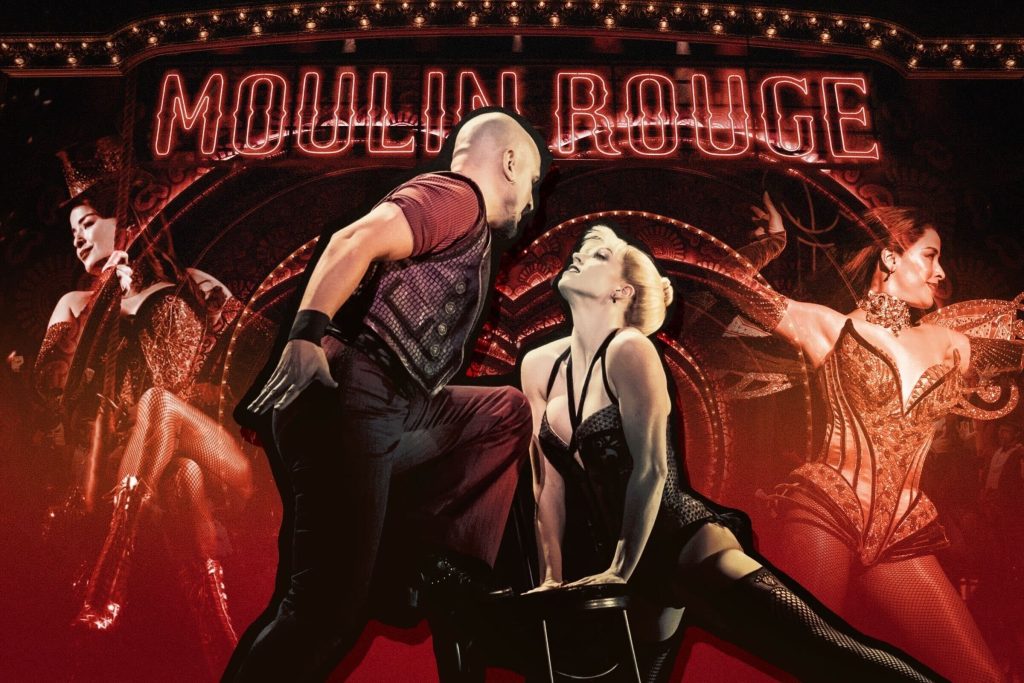
Thrusted into the world of the Moulin Rouge, Amara Holland and Stephanie Dejak embarked on a journey together. A journey of love, passion, glamor and Lady Gaga. In preparation to see “Moulin Rouge! The Musical” at the Fox Theatre, they needed to watch the movie and of course, the obvious watch was Baz Luhrmann’s 2001 film, “Moulin Rouge.” Intrigued by the story and dazzled by Satine — the sparkling diamond herself — Holland and Dejak dove deep in their conversation about the characters, affairs and motifs of the Moulin Rouge.
STEPHANIE DEJAK: I’d never heard of “Moulin Rouge!” before. I’d never seen the movie, and I didn’t know that “Moulin Rouge! The Musical” existed until the Fox Theatre reached out to us. So, I really got the true first timer’s experience here. When I was watching the movie for the first time last week, I really didn’t know what to expect. I didn’t have any expectations going into it — at all — because I honestly just didn’t know what it was. All I knew was that everyone just seemed excited about it. And that “Moulin Rouge!” was apparently fascinating, but I knew nothing about it.
AMARA HOLLAND: It is fascinating! Did you enjoy it?
SD: Oh, it was amazing. But I was definitely a little lost in the beginning. Going into it, I was like, “Who is this guy and why are they traveling? What is going on?” I didn’t quite understand it. But once I saw the whole thing, and of course I did some supplemental reading, I was able to piece more of it together. And then it made more sense. But since I didn’t have any expectations… I was so thrown off by the music. Like, there are some original songs, but there were also a few oldies [like “Your Song” by Elton John], and I couldn’t really understand what the theme was at first. They all seemed like very random songs to pick. And I felt that way at “Moulin Rouge! The Musical” too, in the beginning.
AH: Yeah, I feel like the musical did a better job of connecting the songs to the actual plot, though.
SD: Yeah. For sure. To me, it felt really random, like the songs that they were picking. But obviously since it’s such an iconic movie, people have been appreciating those specific songs for twenty years now. Even though I was thrown off, I agree with you. That the songs they chose in the musical connect better to the plot. I think the first new song in the musical that I didn’t recognize from the movie was “Royals” [sampled in the “Truth Beauty Freedom Love” mashup on the “Moulin Rouge! The Musical” soundtrack]. At first, I was just confused as to why they were singing it if it wasn’t in the movie. But then, when I actually listened to the lyrics, it started to hit me. It makes complete sense if you’re paying attention to what they’re talking about. Like, they honestly couldn’t have picked a better song for that scene. And I really appreciated that they were able to bring in new songs that most of today’s audiences would know.
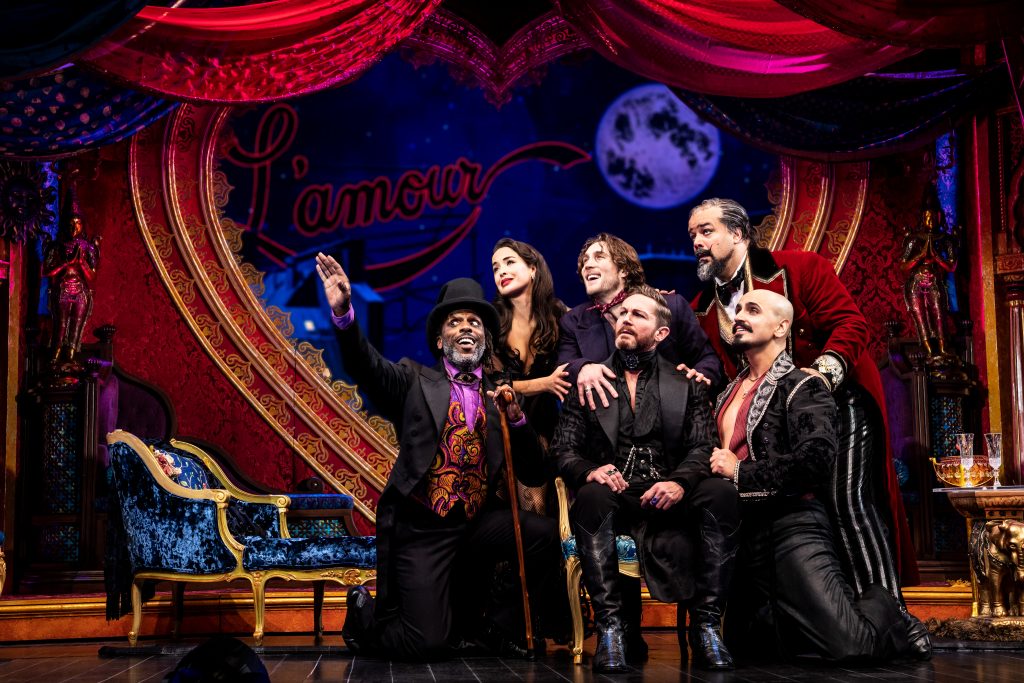
AH: Yeah, I agree. At first, when I heard “Truth Beauty Freedom Love,” I was like, “Okay, wait a second.” But a theme that I recognized throughout the play that wasn’t as apparent in the movie, was this idea of anti-capitalism and anti-greed and anti-rich. The musical placed a lot of emphasis on Satine talking to the other girls at the club. She felt the pressure of “You have to do this, because you have to save us from going back on the streets.” And Christian’s storyline was similar. They’re poor and are trying to get out of their situation. So I thought that was kind of interesting.
SD: I feel like — this was just my perspective from watching the movie and then seeing the play right after — I felt like in “Moulin Rouge! The Musical,” Satine just seemed much more like, sure about her decision if that makes sense. She really was like, “I’m about to get my bag. I have to do what I have to do.”
AH: Yeah!
SD: And I feel like [in the movie] Nicole Kidman didn’t really act that way. She was very much like, “Oh, I don’t know, what should I do? They really want me to do this, but I’m in love with him. What should I do?” I think Courtney Reed did a phenomenal job at playing an updated version of Satine. If Nicole Kidman’s Satine existed in 2023, I think she would totally have that approach to it as well. Because that’s what most women in the [cabaret] industry do now. Like it’s more of a, “No, this is my life and my career and this is how I make my money.” That’s how they’re treating it. There’s more ownership in that decision, and it’s refreshing to see.
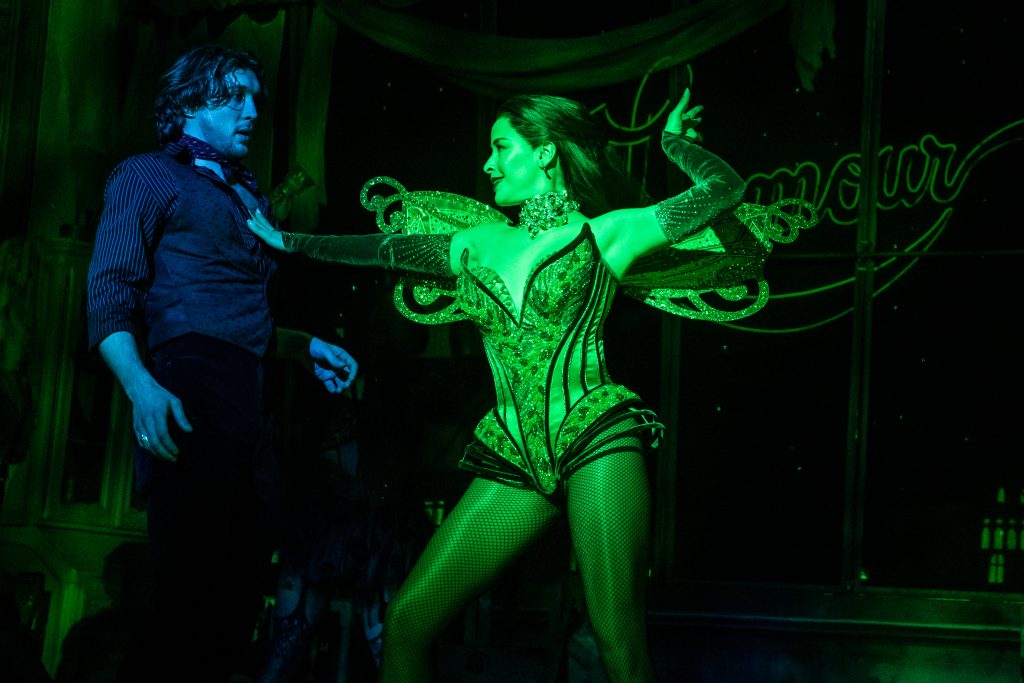
AH: Yeah, I thought she was more of an agent of her own destiny. And I liked that. She had no say in her life whatsoever in the movie. She was more of an object. Whereas in the play, she felt like an actual human being that was torn between these two — well, really two or three — sides of her.
SD: That’s true.
AH: Because she kind of liked being spoiled by the Duke.
SD: She did. Yeah.
AH: And she liked the position that she had at the Moulin Rouge. But then she also was like, in love.
SD: Right. And she was willing to, sort of, admit that to herself. I know there was one point in the play where Satine was like, “I have to do this. I want to be with Christian, but I need to be with the Duke to survive financially.” But, at least from the Duke’s perspective, he obviously saw her as an object rather than a person. I’m glad that at least that part of it was still there, because that still felt very authentic to the film. It was just an updated, stronger version of it.
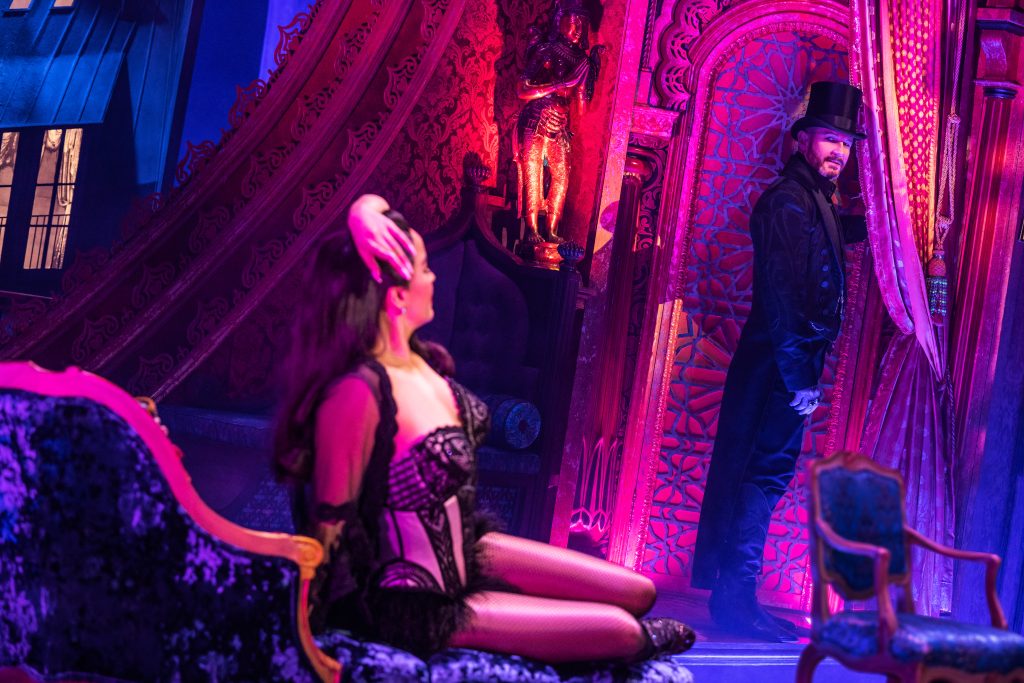
AH: I feel like the play had a lot more social commentary in general, because there’s even more emphasis on the women. Like in the movie, we didn’t get to see much of them at all.
SD: Satine was really the only woman that was around in the movie. And I really liked that the women had their own moment in “Moulin Rouge! The Musical.” They were front and center a lot of the time. Especially that one performance with Nini and Santiago — that performance was amazing. It’s just nice that they decided to add that in there and make the women in this musical feel like actual people.
AH: Definitely. The plot was also much easier to follow in the play than in the movie.
SD: I agree with you. The plot points were definitely clearer in the play. I mean, maybe the play was easier for me to follow because I’d just watched the movie the week before. But I think that even if someone attended “Moulin Rouge! The Musical” and they hadn’t seen the movie before, they would probably still enjoy this production just as much as we did.
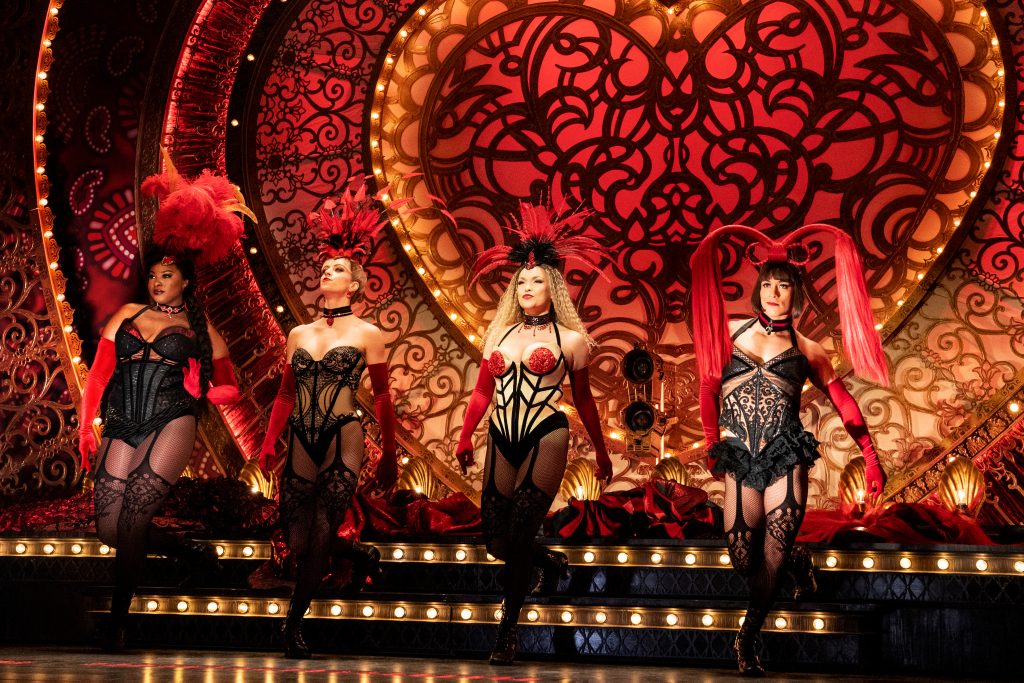
AH: And I think that speaks to plays and the theater in general. Because the idea is that anyone could come down to the theater and watch a play. And so the story has to be laid out for you simply, right? I felt like “Moulin Rouge! The Musical” really held our hands throughout each plot point, in a good way. Where in the movie, there was a point in time where I was like, “Wait, what are the stakes here? Like, what is happening?” I wasn’t even 100% sure. I knew that the club was in trouble in the movie and that Satine had to do this to save the club. But it wasn’t super clear what the stakes really, really were.
SD: I got that, too. I was kind of under the impression that she had to marry this Duke because, you know, he’s a rich man and he wants to buy his own prostitute basically. That’s kind of the vibe that I got, but I also felt like I had to put those pieces together myself. But I really liked how in “Moulin Rouge! The Musical,” they spelled things out a little better for us. We really got this sense of, “Oh, they’re gonna go bankrupt if she doesn’t do that.” Maybe it’s a natural conclusion to make, but I really liked that they were more explicit about it.
AH: And going back to the women being like, “We don’t want to go back on the streets. It’s nice here at the Moulin Rouge. You have to do this for us.” Her boss, Zidler, even said the same thing. Also, he’s openly gay in the play, which is something I love, but it didn’t happen in the movie.
SD: We love the representation! “Moulin Rouge! The Musical” really takes all the best parts of the movie and adds an extra layer of magic to it. I remember when we were watching the movie together and I was really excited to see the amazing costumes that could be replicated on stage. And right from the very beginning, you’re just swept up in all of it. Especially those skirts! It was incredible to see.
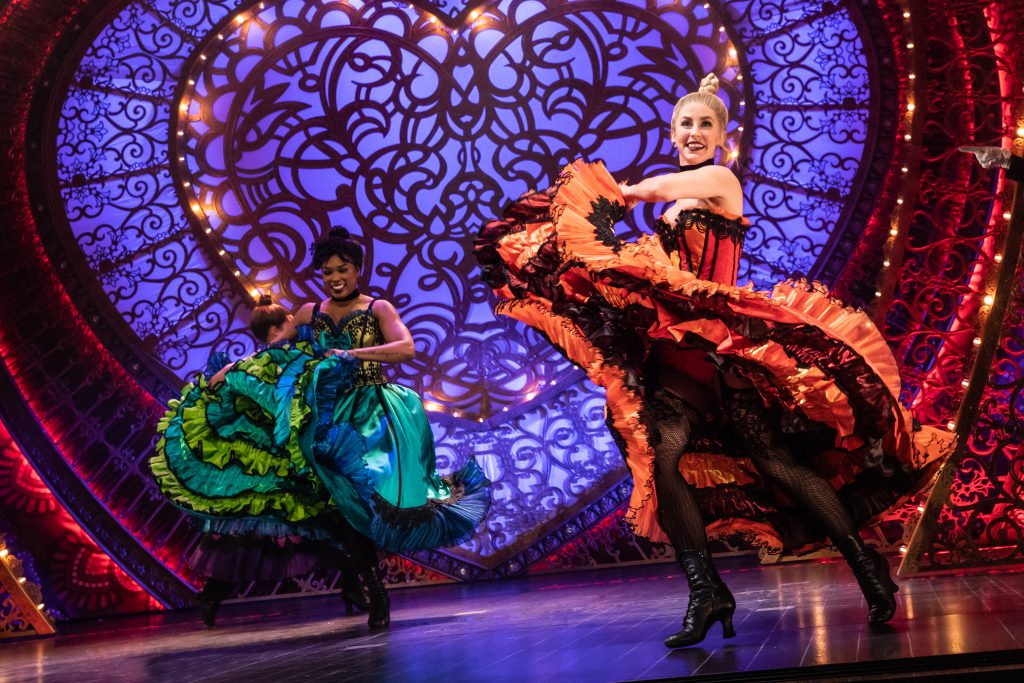
AH: I was visually, like, blown away. I was so in awe.
SD: I loved all the layers of the stage too. I mean, to be fair, I’ve never been to a real Broadway play, so I’ve only ever seen cheap little hometown sets made. But the sets for “Moulin Rouge! The Musical” were fascinating to me. I don’t know if there are many — at least from what I understand — sets that can top that.
AH: So, I remember when I was younger, when I lived in New York, and I got tickets to “Wonderland” on Broadway. That play was phenomenal. They made Alice shrink. They made her grow. Like there were so many visual effects. It literally felt just like the movie when she ate the treat. I don’t know how they did it — because she literally grew on stage — I don’t know how they did it. And that play was extremely immersive. And I felt like “Moulin Rouge! The Musical” came really, really close to that. For me.
SD: Specifically, the set of her dressing room. That felt exactly like the movie for me. I felt like I was right there in it.
AH: And when they had the stars and dropped everything in the background, that was so beautiful.
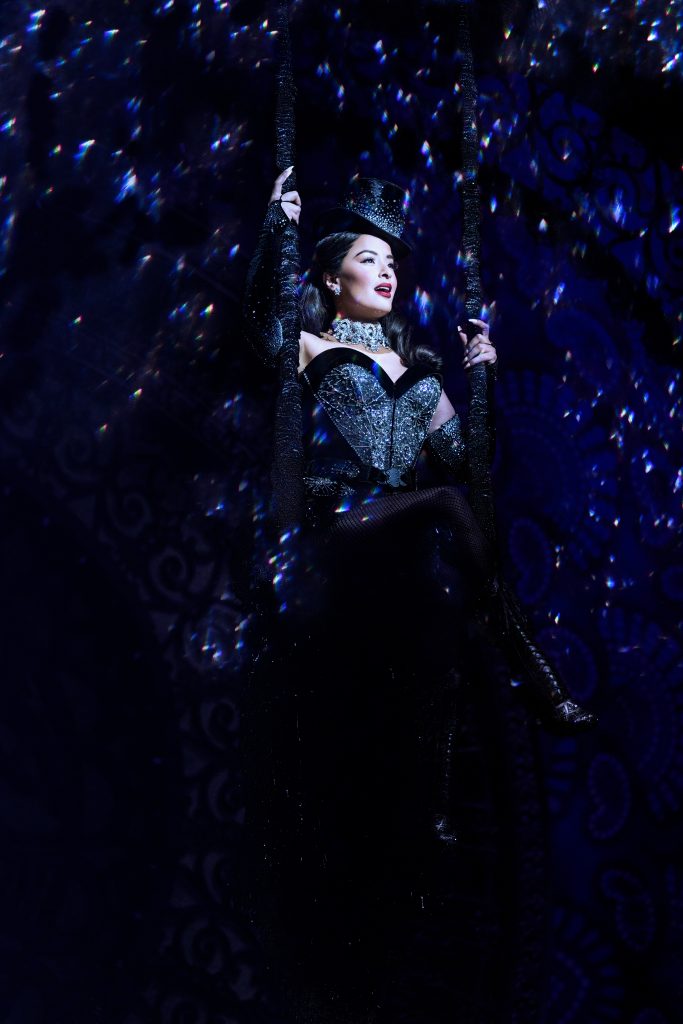
SD: Literally every single scene I was just so overwhelmed by all the beauty of it. And, of course, the one of Satine when she first comes down on the swing… oh my god. Incredible. And I liked that the musical — and I think they did it a little bit in the movie as well — really amped up the mystery about this “Satine” person before she’s introduced to the audience. Like, the audience can understand how important she is by the way they speak about her, but it all kind of hits you at once when she comes down from the ceiling.
AH: It was pretty. The costuming for that was immaculate. Satine literally sparkles. I also loved when Zidler threw his baton and confetti came bursting out in the beginning too. I was like, “Oh, this is going to be amazing.”
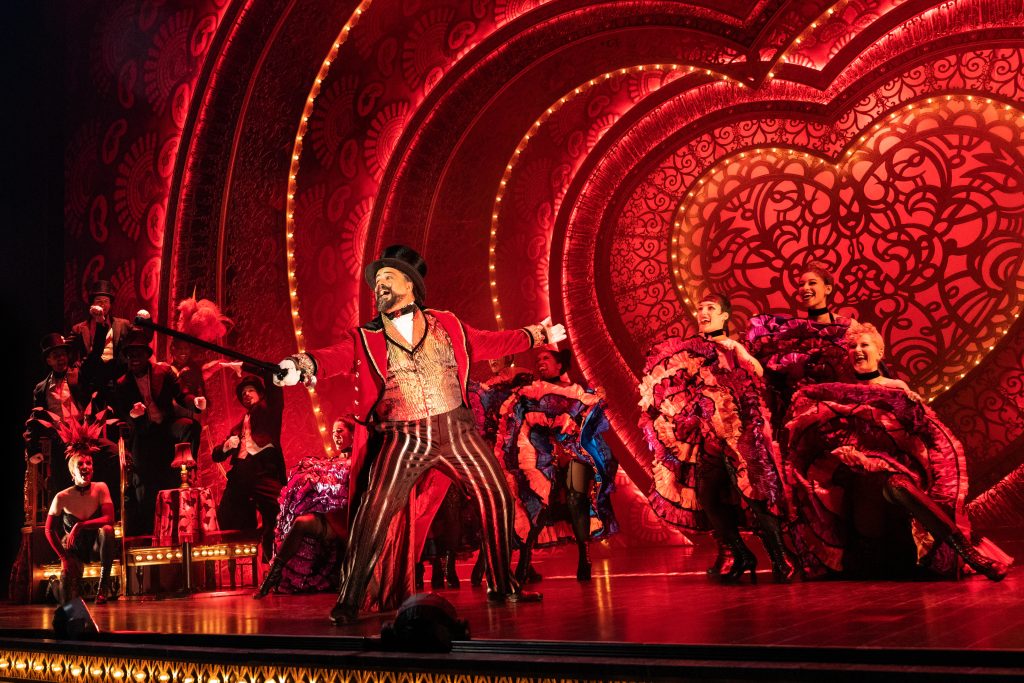
SD: Austin Durant’s performance as Zidler was also great. Like, I really loved his character. He was perfect for that role.
AH: He has a presence that really took over the stage. He was extremely charismatic and was larger than life for sure. He did a fantastic job. But I also want to talk about Christian. Because I felt like the movie was Satine’s story; but I felt like the play was Christian’s story.
SD: You’re right. We got to see a lot more of how Christian was really being affected by all this.
AH: We kind of saw it in the movie. Like, the turmoil of having to hide. But they made the affair in the movie seem a lot more fun and innocent, and thrilling, right? Whereas in the play, it felt like —
SD: You really see the love that these two people have for each other. And how painful it is for Christian to not have Satine around.

AH: Christian’s performance of “Crazy Rolling” shook me to my core.
SD: Right?! It was an amazing scene. John Cardoza really killed that role.
AH: Okay, first of all, [Cardoza] can sing like nobody’s business.
SD: And from what I understand, John Cardoza’s pretty new to “Moulin Rouge! The Musical.” Christian was originally played by Conor Ryan, but apparently Cardoza joined the North American tour last month.
AH: I’m so glad he did. He did a phenomenal job.
SD: Oh my god, and [Cardoza and Reed’s] voices together sounded so amazing. Those harmonies were as smooth as butter. Ugh, I’m already missing it! I wish we could go back!
AH: I know. Because like, we were freaking out when we heard “Come What May” when we watched the movie. We were like, “Wow, that was the best song.”
SD: Yeah, but Courtney Reed and John Cardoza’s performance of “Come What May” was breathtaking. I didn’t think it could get any better than the movie, but it did.
AH: I was shocked. I wanted to cry.
SD: Yeah, same. I was shocked. So good.
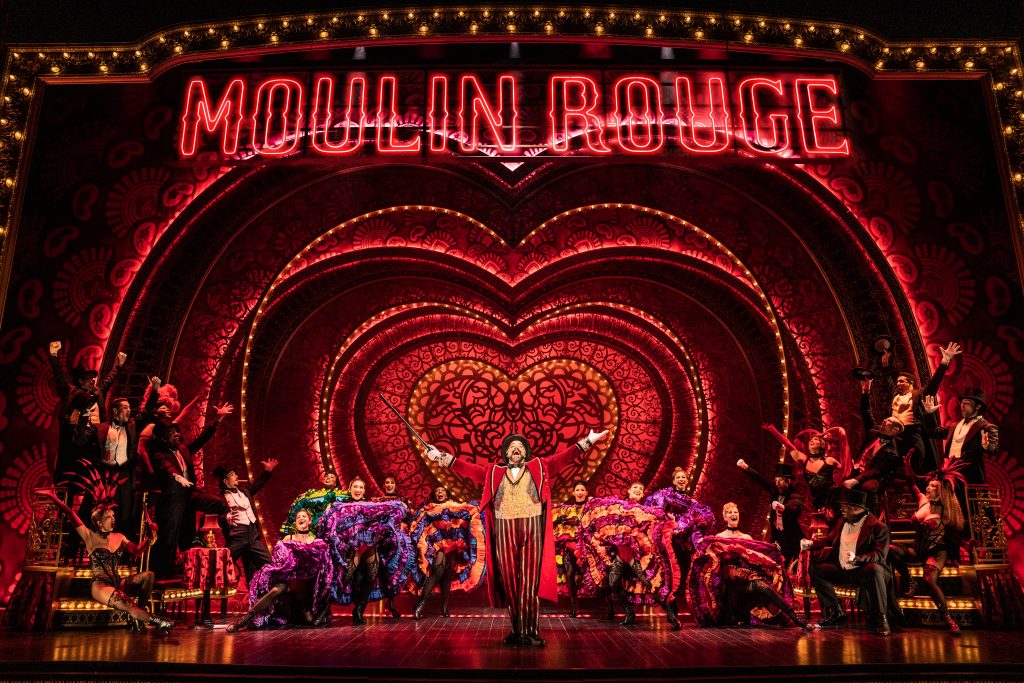
SD: I mentioned earlier that one of my favorite aspects of “Moulin Rouge! The Musical” was how it humanized these characters in a way that we didn’t quite see in the film. Obviously, Satine is the main focus of the movie. And of course, we got to see a little bit of her emotions and how she was feeling because of that. But it’s nice to see a similar level of character development in “Moulin Rouge! The Musical” within all of the characters, even the minor ones.
AH: Yeah! And in the movie, they portrayed Christian as being obsessed with love. And it almost felt like he was hyper-vulnerable to falling in love. In the play, they didn’t mention that. He said, “Oh, I wanted to come to Paris to write, to learn myself and… of course, fall in love.” Like, it was like an afterthought. And I felt like that helped me sympathize with him a little bit, because it felt like when they met by accident in the play, they actually fell in love.
SD: Yeah, like they actually had a connection. And it was about her. And not just the idea of her, or the idea of being in love, or that she’s the face of the Moulin Rouge. We didn’t feel that in the movie because we see Satine as this object, and, of course, she’s definitely treated like an object by the Duke. But I didn’t really feel differently about the way Christian was treating her in the movie either. It did seem that Christian was much more like, “I will love her better than the Duke can.” And in “Moulin Rouge! The Musical,” Christian was more like, “I love Satine as a person. She’s the one for me.” And not just, “Oh, I want to be in love with the cabaret dancer at the Moulin Rouge.”
AH: Exactly. I felt as though in the movie, all the men were wrong.
SD: In the movie, I wanted Satine to go with Christian, of course. But it’s because he was just the better option.
AH: Right. Christian was almost no better than the Duke. Because he was vulnerable to falling in love, fell in love with an ideal and was more in love with the idea that she was in love with him.
SD: And that he could make art out of it.
AH: Exactly. He was just as predatory as Zidler, just as predatory as the Duke. But in the play, it was like he actually cared about her. And he was pissed seeing the way that Duke was treating her. I don’t think we saw that in the movie.
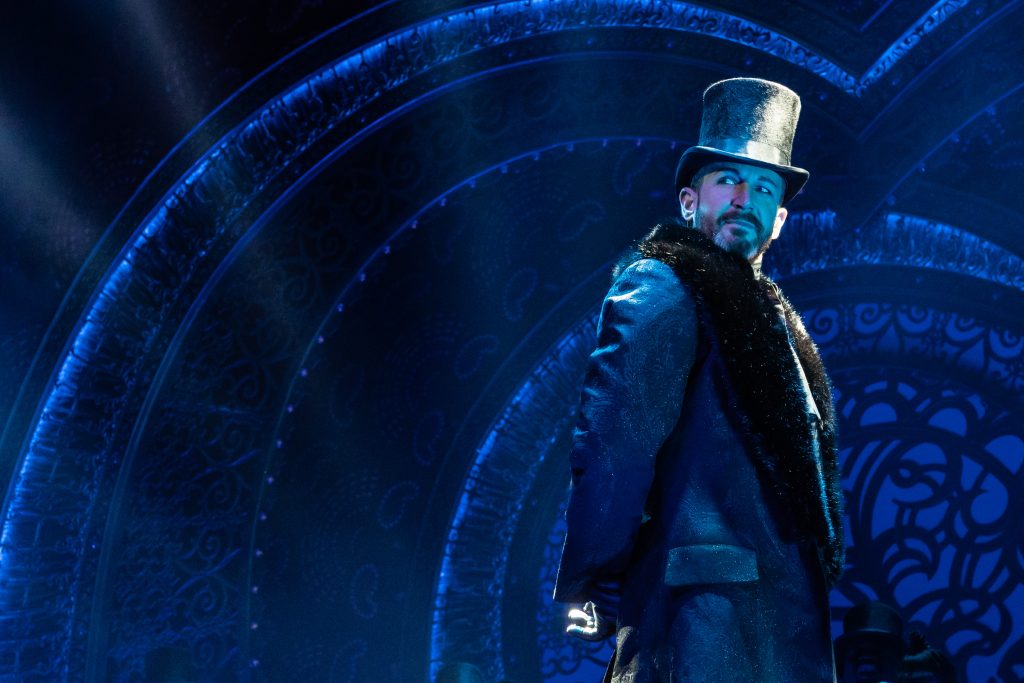
SD: Yeah! And you know, that one line that’s in both the play and the movie where Christian’s like, “Because she doesn’t love you…” I felt that so much more in the play. Because we’re seeing that human side of Christian in the play. And, of course, it makes you stop in your tracks when you’re watching the movie as well, but it’s more so because it’s obvious that Christian just wants Satine to himself. But in the play, you really understand and feel where that’s coming from with Christian’s character. And that really resonates with the audience differently.
AH: Yeah. I feel like him saying, “She doesn’t love you” in the play was really speaking to like, “I am the side of her that she really is,” or “I represent the side of her that she really is.” We didn’t get that in the movie.
SD: Yeah, we didn’t get that.
AH: And like, I think that movie was great.
SD: Oh, of course. It’s iconic.
AH: But I feel like the play… maybe it’s because it’s longer. Well, I think it’s 100% because it’s longer. But “Moulin Rouge! The Musical” just went a little bit more in depth with those characterizations.
SD: It really intensifies that love that so many people already have for the “Moulin Rouge!” film, and rightfully so because it’s a great film, but this is really — oh my god, I just don’t have enough good things to say about this production.
AH: I was really, really blown away. And like, when I saw the runtime was 2 hours and 45 minutes. I was like, “Oh, that’s kind of a long time.” But when it ended, I really didn’t want it to end.
SD: Me either. I wasn’t ready to leave!
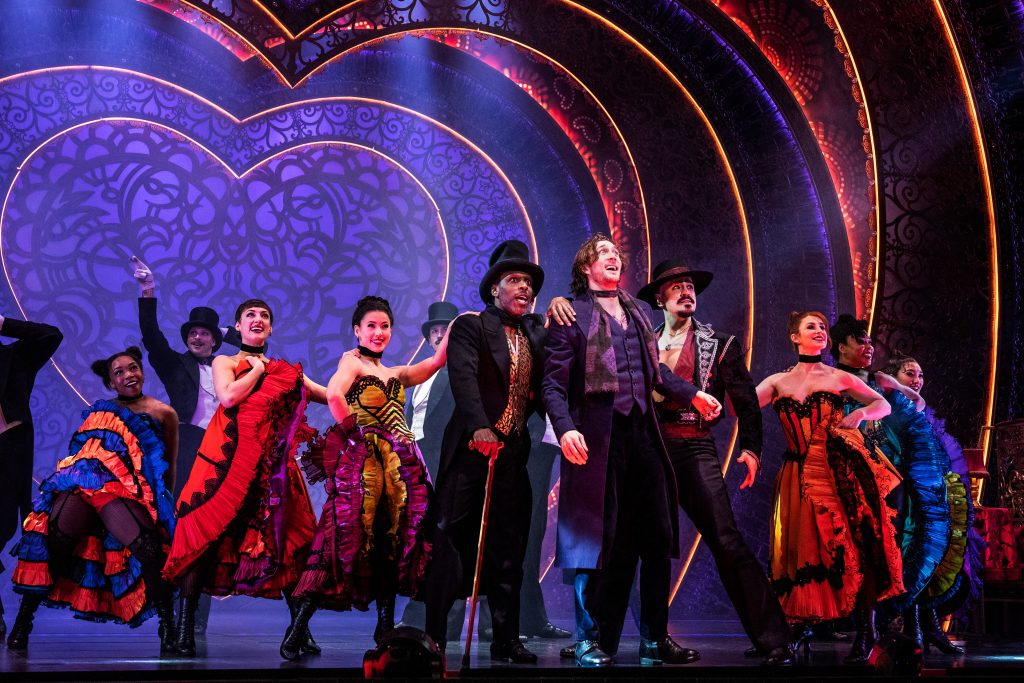
But unfortunately, all good things must come to an end. “Moulin Rouge! The Musical” still has five more shows this weekend before it leaves the Fox Theatre — but hurry, tickets are selling quickly! For more information, visit foxtheatre.org/moulin-rouge-the-musical.




















